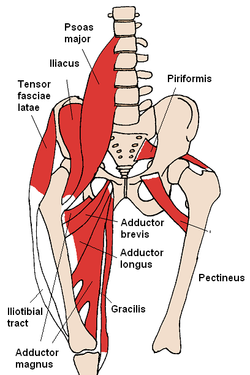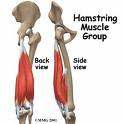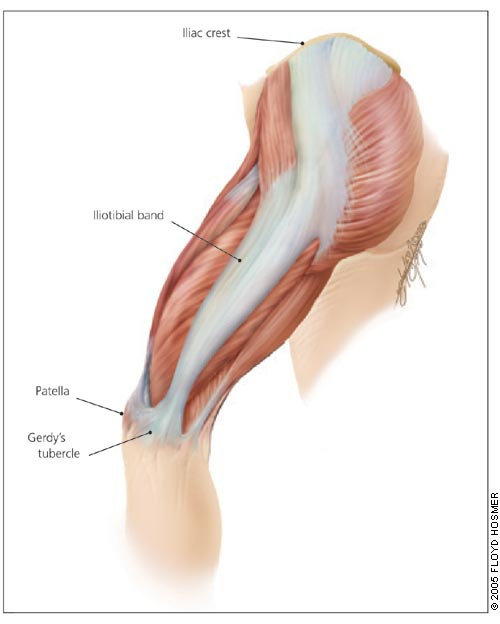5 Feb 2014
Preventing Back Injuries in Skating
Lauren Downes MSPT
At least once per week, I receive an email or phone call from a coach, parent, or skater asking about back injuries: how to diagnose them, how to treat them, and how to prevent them. Spinal injuries are very prevalent in the sport of figure skating, and for some, can make or break their skating career. To avoid this, skaters and coaches need to take the necessary steps to prevent injury occurrence. Several factors need to be addressed to lessen a skater’s risk of injuring the spine.
1. Address Flexibility Imbalances: Skating is a sport that requires a great deal of flexibility, and unfortunately, not every skater’s body is designed to maintain some of the positions required for many elements. For example, let’s examine a layback spin. The lower spinal joints, specifically the L3-S1 vertebrae, achieve full extension and compression in a layback spin. This is not a normal position for the spine to rest in for an extended period of time, and excessive repetition of laybacks can cause irritation of the facet joints, which take the brunt of the extension forces. How do we alleviate some of this stress? Address hip flexibility deficits! In a layback, a skater’s hips and pelvis need to sit forward to balance the weight of the upper body moving backward. If a skater has a tight psoas (hip flexor) muscle, the hips will have difficulty shifting forward, and greater compression is transferred to the lower spine. The psoas attaches anteriorly to the lower joints of the spine, and to the anterior pelvis, and will restrict mobility in these areas if tight. Therefore, there is a direct relationship between psoas tightness and back problems.
Picture a skater reaching back for a flip or lutz jump. The back should remain straight as the free leg reaches back to pick for takeoff. If the psoas muscle is tight, it restricts the amount of extension in the hip, and the skater must lunge forward, creating an incorrect angle of the spine and hip. How many times do you hear a coach telling a skater not to kick the free leg so high? I, myself, was a culprit of the lutz ‘leg kick’ in my teens, and didn’t learn that my abnormally tight psoas was the culprit until a biomechanics course in college clued me in! Not only would I have corrected my technique by simple stretching, I would have prevented the extension compressive forces from occurring with each takeoff. So the lesson behind psoas stretching is ‘Free the hip mobility, and decrease the compressive forces on the spine.’
Psoas muscle  Hamstring muscle Hamstring muscle 
Let’s take a look at the effect hamstring flexibility has on the spine. The hamstring muscle attaches to the lower part of the pelvis, and affects the amount of posterior rotation of the pelvis. When you bend forward, you are able to lower your hands to the ground due to the mobility in the spinal joints and the hip joint. If the hamstring muscle is tight, it restricts the amount the hip can flex forward, and causes the spine to flex forward to its maximum range. This can put a strain on both the muscles and joints in the lower spine, as there is added stress placed on them due to the lack of hamstring flexibility.
A sit spin is a prime example of the effect of hamstring mobility on the spine. As a skater sits lower into the spin, the amount of stretch on the hamstring increases. Once a skater has reached the maximum flexion of the hip joint that the hamstring allows, the lower back will begin to flex forward. If a skater has tight hamstrings, this causes an increase in stress on the lower spinal joints.
Let’s now address the biellman spin, which is every physical therapist’s nightmare! The effect of psoas flexibility on the spine in a biellman spin is much greater than in a layback spin, and the amount of flexibility of the hamstring in the skating leg is also a factor into the mechanics of this spin. When I evaluate a skater that is approaching a level at which she will be learning a biellman, I typically evaluate psoas, hamstring, and spinal mobility. It is usually immediately apparent if the skater will have the ability to obtain the mobility needed to complete a biellman, and if the skater does not have the required mobility, I recommend to the coach and parent to avoid the spin. Some listen, and some don’t, and those who don’t usually develop a lower back issue in a year or two. I like to see at least a 110 degree straight leg raise (showing good hamstring mobility), a negative Thomas test (showing no psoas mobility restrictions- google this test!), and good movement in the lower spinal joints. If a skater passes these requirements, I give the go ahead to learn the spin!
Another muscle of note is the Iliotibial Band (IT Band), which runs from the crest of the pelvis, down the side of the leg to the outside of the knee. Flexibility of this muscle is not necessarily needed to complete most skating elements, but a lack of flexibility can contribute to lower back issues. Because of its attachment to the pelvis, the IT Band affects the movement of the pelvis with all leg motions. Picture a view of the spine, how it sits between the two halves of the pelvis, and how the tailbone sits directly between the two pelvic bones. The joint between the tailbone (sacrum) and the pelvis is called the sacroiliac (SI) joint, and can be the site of friction between the two bones if its movement is restricted. A tight IT Band (in addition to the psoas and hamstring) can cause a mobility deficit at this joint, and must be addressed with stretching to prevent an SI joint problem.
IT Band 
2.Strengthen the Core and Hip Muscles: Abdominal and lower back strength is a necessary, important component of a skater’s training program. These muscles work together to stabilize the spinal joints, which in the sport of figure skating, endure very high compressive forces and torque. To be able to withstand this torque and force, the joints need muscular support to stabilize them. Without core strength, the shearing force on the spinal joints increases, and the lower back is more susceptible to injury.
Let’s talk about falling. All skaters fall; it is a given in this sport! Picture a skater falling directly on the buttocks and tailbone from a jump, and the direction of force on the skater’s body. The compressive force is transferred to the lower back, and if the skater does not possess a great amount of stability in the spinal joints, he or she is at greater risk for injury than a skater with muscular stability in the core. Core strength will provide a better foundation for the lower back to absorb the compressive forces of a fall, and improves the shock absorption to the spinal joints.
“In the sport of figure skating, both posture and stability are necessary to complete demanding moves while creating an appealing line on the ice. With each jump takeoff, and incredible amount of core strength is needed as the forces of the blade on the ice, the centrifugal force of rotation, and the movement forces of the lower and upper extremities challenge the body’s balance. To achieve tightness in the air, the core contracts to allow the legs and arms to tighten around the body. Then, upon landing, core strength is needed to again to transfer the force of the body on the ice through the body, to maintain an erect and balanced landing, and to resist the last amount of rotational force to control an appropriate edge.” (“Core Stability Training” www.sk8strong.com, Dec. 2008).
If a skater has exceptional core strength, it will be easier for the skater to use the proper spine mechanics with jumping and spinning; therefore, reducing the skater’s risk of injury in the spine. Weak core musculature leads to improper mechanics, which can causes poor landings, falls, and excessive torque on the spine.
The glute medius muscle cannot be ignored, as its role is to stabilize the hip and pelvis. Weakness in this muscle, in conjunction with flexibility imbalances and core weakness, can contribute to lower back problems. In single leg stance, the glute medius’ primary role is to maintain a level pelvis. A skater with a weak glute medius will exhibit a ‘hip drop’ drop in spins such as a sit or a layback, and on all jump takeoffs. This imbalance in pelvic position has a direct effect on the spine, because of the balance of the spine between the two halves of the pelvis.
3. Use proper equipment: The use of proper equipment must be included in this conversation. Using skates with the correct amount of support for the skater’s height, weight, and ability is important, as the skate needs to absorb the appropriate amount of shock during jump landings. A skater’s boots should not be too stiff, as the skater will not be able to use the proper mechanics of the ankle, knee, and hip in a boot with too much rigidity. Proper padding should be used on the hips and buttocks if a skater is prone to falling on a certain area.
4. Don’t overtrain: A skater and coach should develop a training plan that includes an appropriate number of jump and spin repetitions for that skater’s endurance and tolerance. Some coaches have skaters keep a log of jump repetitions to limit their jump attempts to a certain number. This may prevent a skater from fatiguing, as a skater is more likely to use incorrect technique when their muscles are tired. The number of repetitions should be determined over time, as the skater and coach become familiar with the skater’s endurance and tolerance.
In conclusion, it is important for a skater’s support team to address all factors discussed. A skater needs the best possible environment to maximize training time while preventing injury. Healthy skating promotes longevity in the sport!
|